Highlights
Table of Contents
Explore article topics
Filters are a relatively affordable and easy way of bringing some versatility to the cinematic lenses in your kit bag. Adding a specialized piece of glass to your lens can help you cope with a range of different shooting conditions or bring special effects to your scenes with relative ease. A clear filter can be used just to protect your lens from dirt and scratches.
Some filters will screw onto the front of your lens, and you’ll need different sized ones for different sized lenses. Alternatively, you could choose square or rectangular filters. These are secured in place using a filter holder that you mount to the front of your lens.
Ultraviolet (UV) and skylight filters
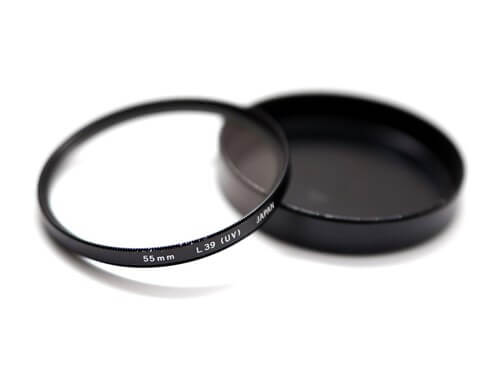
Image by Ashley Pomeroy
UV filters block out UV light. UV light could produce a hazy effect with some photographic films. Digital sensors mean that whether UV filters are necessary now is debatable, but they do offer protection from dirt and dust and certainly won’t hurt.
A skylight filter will help reduce any blue cast that you can catch when shooting outside under very blue skies. But do be cautious, as they can cause lens flare and reduce contrast.
Polarizing filters
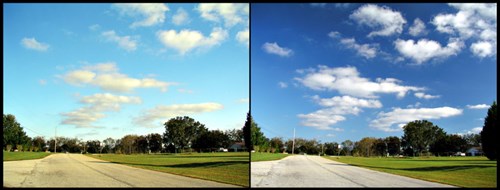
On the right, the polarizing filter effect. Image by PiccoloNamek
A polarizing filter can be particularly useful if you are shooting in natural light. Polarizing filters work by blocking certain waves of light that your subject reflects rather than absorbs. Consequently, they will saturate the colors in your scene and help reduce reflections in water and glass.
However, there are a couple of points you will need to watch out for when using polarizing filters. First, you will probably need to adjust your exposure a little as they can make you lose a stop or 2 of light. Second, when you’re panning, a polarizing filter can give the sky an uneven appearance, so do be wary of that.
Neutral density filters
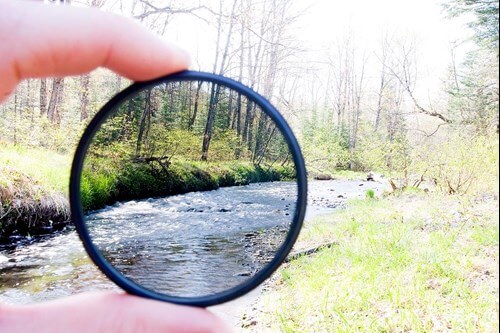
Image by NotFromUtrecht
When you’re shooting in very bright conditions but cannot alter your shutter angle to prevent overexposure, a neutral density (ND) filter is just what you need. ND filters absorb light from across the spectrum without affecting color and don’t require any special adjustments from your camera.
You can purchase ND filters in different strengths, measured in stops, depending on how much light you need to block from a scene. The stronger the ND filter, the more light it will block from your scene.
Graduated Neutral Density filters
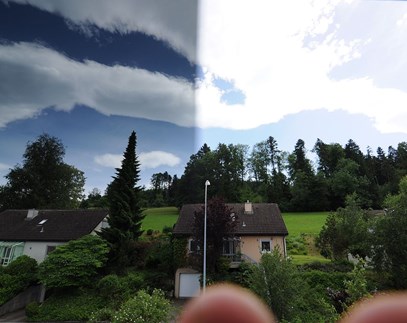
The effect of the GND filter on the left. Image by Simon A. Eugster
A standard ND filter blocks out light evenly across your scene. But what if you need to reduce the exposure over just part of a scene, for example, a very bright but overcast sky? Then you need a graduated ND filter. It’s a filter that’s half-clear and half-tinted. You might also hear them called ND grads.
ND grads come with both hard and soft edges, with the transition between light and dark being either harsh or gentle. What you need will depend on your scene. If you have an obvious dividing line between light and dark, then a hard edge is what you’ll need. But more likely, you will require a soft edge, which gives a more natural appearance. A reverse ND grad is used for sunrise and sunset shots: the tint is stronger in the filter center rather than at the top. Just like standard ND filters, ND grads come in varying strengths, too.
Color correcting filters
Color correcting filters come in a range of colors and are used for different reasons. You might hear them referred to as warming or cooling filters, color correction, or color conversion filters.
In short, you can use them to enhance a specific color in your scene. They are especially useful for adjusting white balance, which is when you will most likely hear them called warming or cooling filters. In this case, they can give your lighting a more yellow or blue look to make them feel warmer or cooler.
If you have lots of fluorescent lighting on set, then you might want to use FLD filters, which will help to reduce their greenish cast. You can also use them for special effects, as FLD filters will darken anything green and give you a purplish tint, too.
Close-up filters
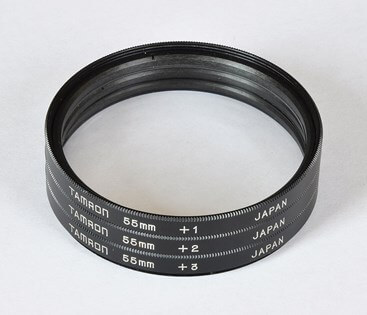
Image by Joe Ravi
If you want a close-up shot but don’t have a macro lens, try a close-up filter. Close-up filters are also known as diopters or macro filters. They aren’t as good as dedicated macro lenses as they aren’t nearly as sharp, but if you’re not going to make lots of use of an expensive macro lens, they are an excellent alternative.
Macro shots are well known for having a shallow depth of field, and a close-up filter will have that effect, too. This means you will need to watch out because your area of focus can be very small.
Get unlimited royalty-free 4K footage
Special effects filters
When you want to make lights look especially twinkly in a scene, use a starburst filter. They come with 2, 4, 6 or 8–point star effects.
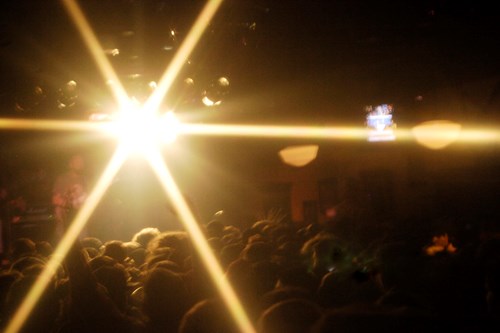
The starburst filter effect. Image by Rhea Ball
Multivision filters create an effect that resembles a kaleidoscope, as they duplicate your subject between 2and 6times. A linear multi-vision filter will produce the duplicates in a straight line. For duplicates positioned in a circle, use a circular multi-vision filter.
Diffusion or soft focus filters will give everything in your scene a soft and dreamlike quality. They are great for romantic, dream or recollection scenes or for shots that might involve babies and young children. If you don’t want everything in the scene to be soft, look for a center-spot filter. This will keep your subject sharp but soften the edges of the shot.
You can also make or buy bokeh filters, which customize the shape of the bokeh in your scenes too.
Infrared filters
Infrared filters block what we regard as ‘normal’ light wavelengths, allowing only infrared light to pass through to the sensor. Shooting infrared scenes can be tricky because they require long exposures, but the effect can be wonderfully surreal.
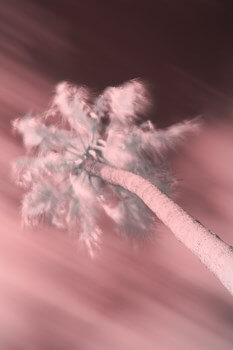
The effect of the IR filter. Image by Daniela Bowker
Filters for smartphones
Filters are not just for cameras but are manufactured alongside a range of other smartphone camera accessories. You can buy filter mounts that attach to your phone and allow you to attach ND filters, diffusion filters or polarizing filters.
Get filtering!
Filters are a valuable addition to your kit bag. It’s worth thinking if a filter can help you achieve what you want without having to abandon your original vision, compromise in any other way, or go out and buy a much more expensive piece of equipment.
Daniela is a writer and editor based in the UK. Since 2010 she has focused on the photography sector. In this time, she has written three books and contributed to many more, served as the editor for two websites, written thousands of articles for numerous publications, both in print and online and runs the Photocritic Photography School.
Share this article
Did you find this article useful?
Related Posts
- By Josh Edwards
- 7 MIN READ
- By Shivani Reddy
- 8 MIN READ
Latest Posts
- 25 Apr
- By Josh Edwards
- 4 MIN READ
